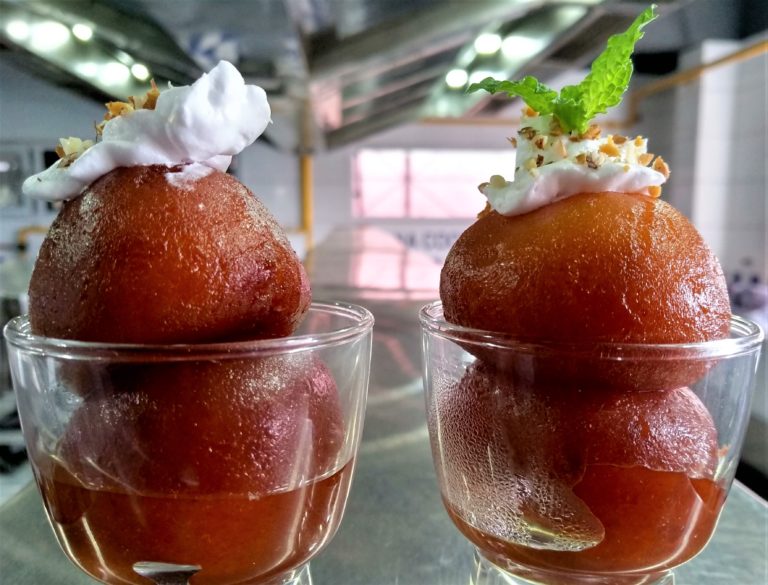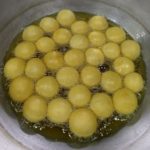 Gulab Jamun, small rounded balls which is deep fat fried and plunged in sugar syrup, famous in nations of the Indian subcontinent as India, Pakistan, Nepal and Bangladesh. The term Gulab jamun originates from Persian, Gulab implies rose alluding to the rosewater scented syrup and jamun from the Hindi language, a typical South Asian fruit.
Gulab Jamun, small rounded balls which is deep fat fried and plunged in sugar syrup, famous in nations of the Indian subcontinent as India, Pakistan, Nepal and Bangladesh. The term Gulab jamun originates from Persian, Gulab implies rose alluding to the rosewater scented syrup and jamun from the Hindi language, a typical South Asian fruit.
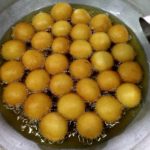 It has been an outstanding old story in India that Gulab Jamun was first unintentionally arranged by the central Persian cleric of Mughal lord Shah Jahan. Furthermore, at the season of Mughals administering India, it was acquainted with the Indians, as an illustrious sweet. Gulab Jamun is customarily and verifiably connected with India and it’s a standout amongst the most respected sweet dishes in the subcontinent today.
It has been an outstanding old story in India that Gulab Jamun was first unintentionally arranged by the central Persian cleric of Mughal lord Shah Jahan. Furthermore, at the season of Mughals administering India, it was acquainted with the Indians, as an illustrious sweet. Gulab Jamun is customarily and verifiably connected with India and it’s a standout amongst the most respected sweet dishes in the subcontinent today.
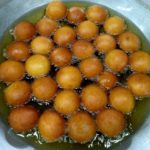 The ideal gulab jamun calls for carefully estimated ingredients and a rehearsed system. Made with chenna and khoya and sometimes massaged with refined flour, wads of batter are seared till they turn that tricky ruddy shade among gold and darker. After the warmed oil does something amazing, the solidified sugar in the player makes a marginally grainy covering while the jamun’s white heart stays satiny.
The ideal gulab jamun calls for carefully estimated ingredients and a rehearsed system. Made with chenna and khoya and sometimes massaged with refined flour, wads of batter are seared till they turn that tricky ruddy shade among gold and darker. After the warmed oil does something amazing, the solidified sugar in the player makes a marginally grainy covering while the jamun’s white heart stays satiny.
Imbued with rose-scented (or cardamom-seasoned) chashni (sugar syrup), the ball respects the smallest weight, truly softening endlessly as one chomps into it. Thusly, the cushy pads of warm, syrup-loaded mixture are as profoundly consoling as they are scrumptious.
In any case, with that delicious vision in our brains, its opportunity to unwind the intriguing story of how gulab jamun become an indistinguishable piece of Indian lives.
History uncovers some fascinating realities about the inceptions of this observed Indian sweet. Food legends has it that the gulab jamun was inadvertently prepared by Shah Jahan’s imperial gourmet expert who took motivation from Persian/Turkish customs and neighbourhood halwais.
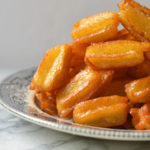
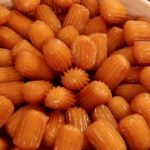 Strangely, the Persian Bamieh and the Turkish Tulumba are both like the gulab jamun. They are both cushy chunks of unleavened mixture seared and absorbed sugar syrup. Be that as it may, dissimilar to the gulab jamun, it is served cold. In any case, it might have been what roused the Mughal cooks.
Strangely, the Persian Bamieh and the Turkish Tulumba are both like the gulab jamun. They are both cushy chunks of unleavened mixture seared and absorbed sugar syrup. Be that as it may, dissimilar to the gulab jamun, it is served cold. In any case, it might have been what roused the Mughal cooks.
Culinary student Michael Krondl wrote in his book “The Donut: History, Recipes, and Lore from Boston to Berlin” how Persian intruders carried with them a “round fritter that inevitably moved toward becoming gulab jamun (gulab originates from the Persian word for rose, while jamun alludes to a neighbourhood organic product).”
He further includes, “The Indian formula is more mind boggling than in the Middle East, requiring a blend of dried and new milk thickened with flour. Yet, as in Iran, the blend is seared and absorbed rosewater syrup”.
 Another hypothesis follows gulab jamun’s source to the well-known Arabic pastry Luqmat al Qadi, which comprises of pan-fried mixture balls plunged in nectar and sprinkled with sugar. The player, however, is not the same as the Indian rendition. Strangely, the name Luqmat al Qadi truly means “the judge’s morsel” — the sweet is viewed as sufficiently flavourful to influence the assessment of a judge!
Another hypothesis follows gulab jamun’s source to the well-known Arabic pastry Luqmat al Qadi, which comprises of pan-fried mixture balls plunged in nectar and sprinkled with sugar. The player, however, is not the same as the Indian rendition. Strangely, the name Luqmat al Qadi truly means “the judge’s morsel” — the sweet is viewed as sufficiently flavourful to influence the assessment of a judge!
After some time, a trade of traditions and social thoughts prompted the advancement of nearby and hyperlocal varieties of the gulab jamun that mirror the gastronomic chronicles of the specific locale.
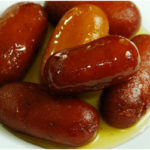 For example, the instance of Ledikeni, the round and hollow, red-darker treat from Kolkata whose impossible to miss name has its very own sweet legend.
For example, the instance of Ledikeni, the round and hollow, red-darker treat from Kolkata whose impossible to miss name has its very own sweet legend.
As indicated by the most mainstream story, in the late 1850s, Calcutta’s expert confectioner Bhim Chandra Nag was approached to set up an uncommon sweet for Lady Canning — the spouse of Governor General Lord Charles Canning (later the primary Viceroy of British India) — who was coming to India to be with her better half. What’s more, in this manner, coincidentally or a demonstration of virtuoso, ledikeni was conceived.
The sweet treat got the extravagant of Lady Canning, who was so partial to the sweet that local people before long began alluding to it as ‘ledikeni’ (an error of her name). Serving the pastry on all events and gatherings facilitated by her, the Viceroy’s significant other was additionally in charge of promoting it over all of Bengal.
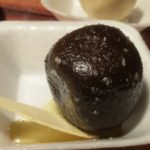 The state interestingly also home to a sweet called Pantua, which is basically a mini gulab jamun sometimes stuffed with mishri.
The state interestingly also home to a sweet called Pantua, which is basically a mini gulab jamun sometimes stuffed with mishri. 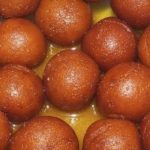 There is existence of other type of sweets of the same family from the sweetest state of India, West Bengal and especially from Baharampur named Chanabora (Fried Caesin dipped in sugar syrup).
There is existence of other type of sweets of the same family from the sweetest state of India, West Bengal and especially from Baharampur named Chanabora (Fried Caesin dipped in sugar syrup).
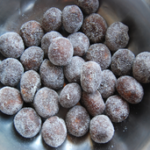
Discussing local variations of the gulab jamun, another intriguing one is the dry jamun of Kumbakonam. Made and sold by the family-run Kumbakonam Murari Sweet, the dry jamun has a sugar-tidied, crisper outside and is littler than its unique namesake. It likewise has a time span of usability of seven days without refrigeration, making it an absolute necessity purchase nourishment keepsake on the off chance that you are heading out to this sanctuary town in Tamil Nadu.
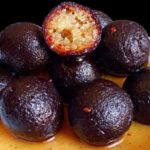 The tale of gulab jamun’s celebrated more distant family is inadequate without referencing its much-cherished culinary cousin, Kala Jaam or Kala Jamun. This variation gets its mark dark purple shading and fresh surface from the additional sugar that is added to its hitter before being southern style at a high temperature.
The tale of gulab jamun’s celebrated more distant family is inadequate without referencing its much-cherished culinary cousin, Kala Jaam or Kala Jamun. This variation gets its mark dark purple shading and fresh surface from the additional sugar that is added to its hitter before being southern style at a high temperature.
Most famous places of India to taste Gulab Jamun:
Delhi: Shiv Misthan Bhandar, Chandni Chowk
Bengaluru: Bhagathram Sweets, Chats & Fast Food, Commercial Street
Kolkata: Girish Chandra Dey and Nakur Chandra Nandy, Hatibagan
Chennai: Shree Mithai, Nungambakkam
Lucknow: Pandit Ji Ke Dehati Rasgulle, Aliganj
Hyderabad: Dadu’s Mithai Vatika, Jubilee Hills
Mumbai: Krishna Gulab Jamun, Khar West
Ahmedabad: Champaji Gulab Jamun House, Paldi
Shimla: Baljee’s, Mall Road
Jodhpur: Chitrakoot, City Market, Jodhpur
Bonus Trivia: Did you know that one of Uttar Pradesh’s best-kept insider facts is a ‘gulab jamun thruway’? Situated close Maigalganj town in Lakhimpur locale, this a large portion of a-kilometer extend along the Delhi-Shahjahanpur-Lucknow National Highway 24 is specked with over a hundred shops selling new and cushioned gulab jamuns in earthen plates.
Truth be told, it has turned into a custom for customary workers along this course to stop, enjoy and get a portion of these lip-smacking desserts stuffed for family and companions!

